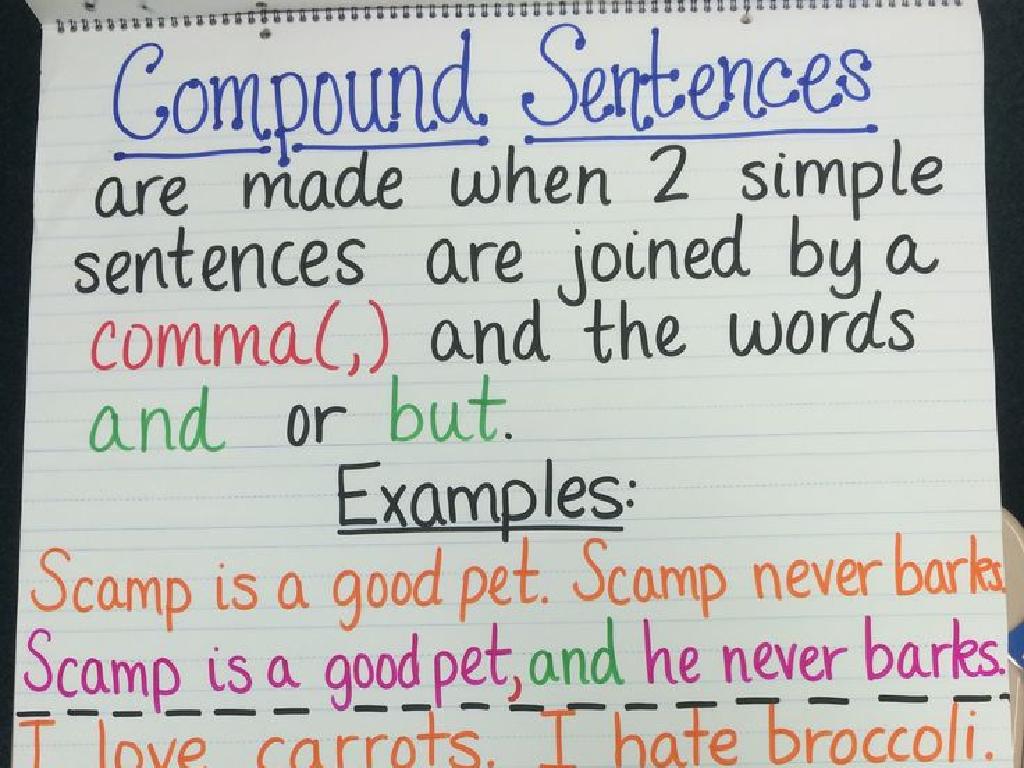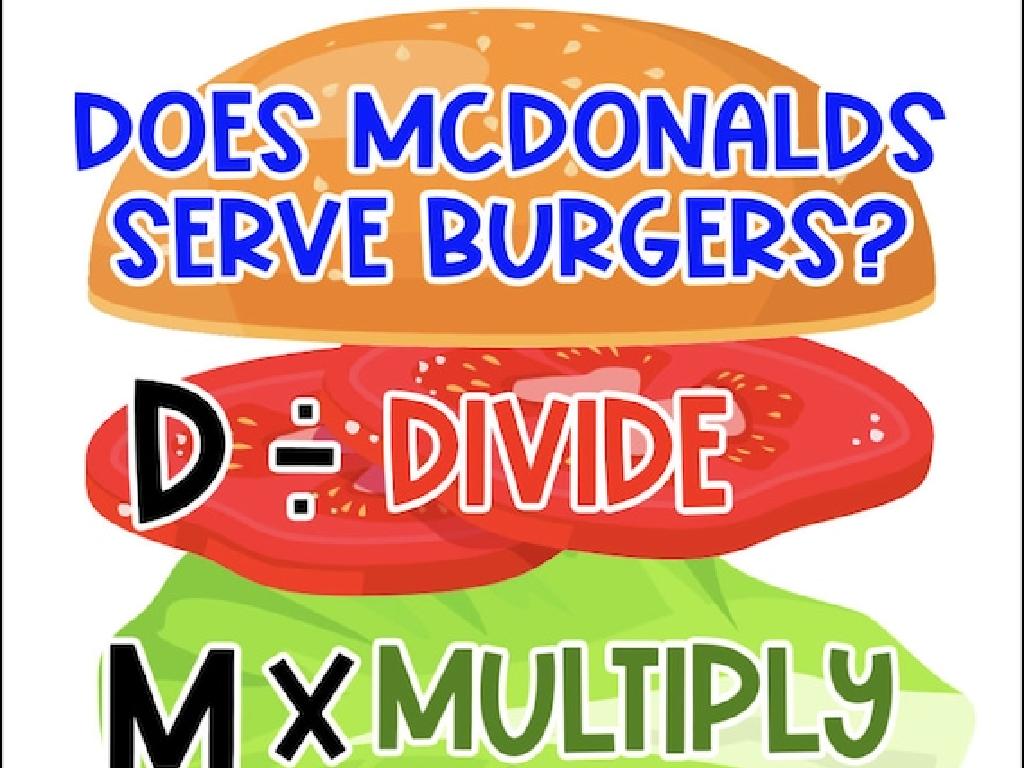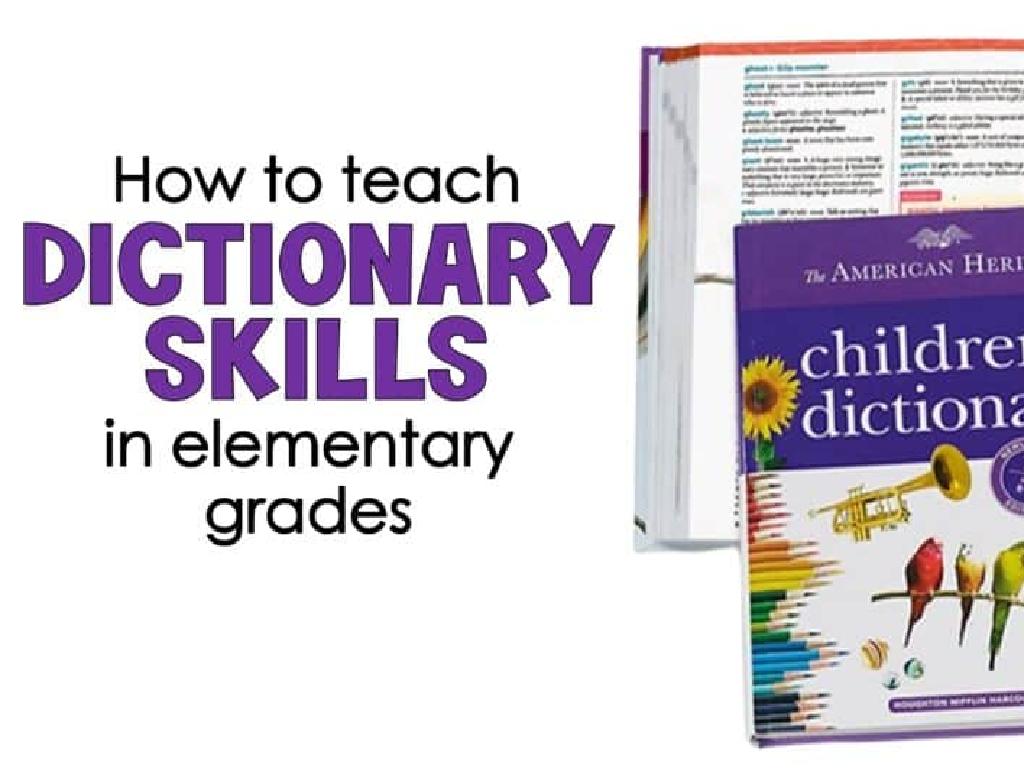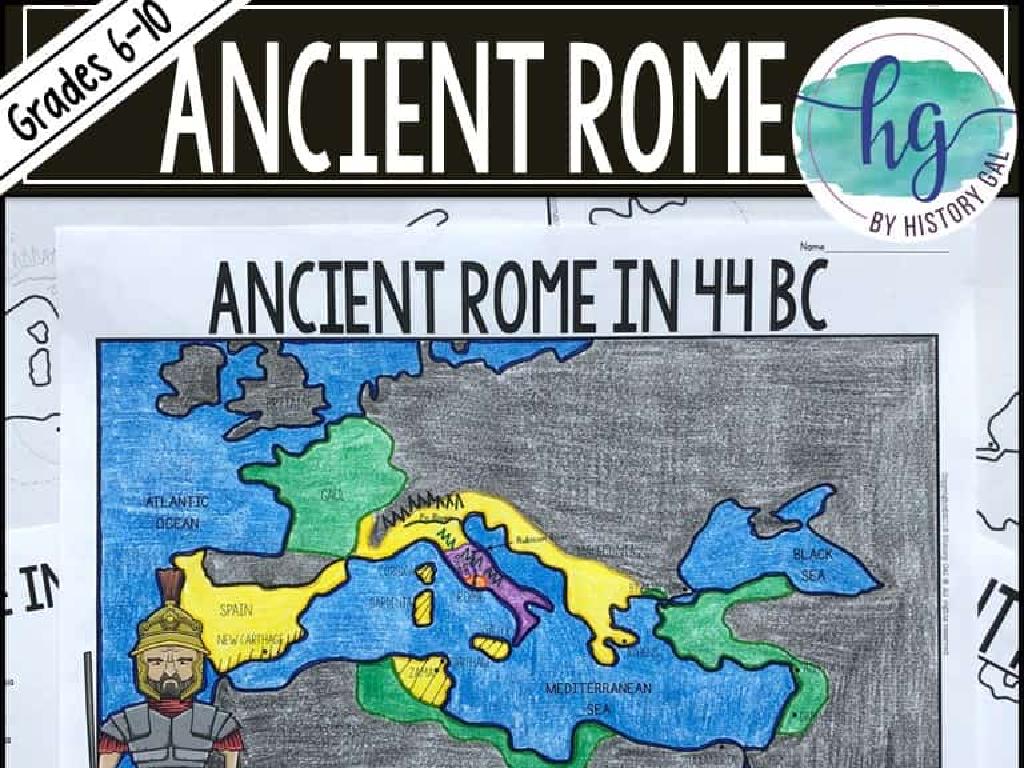Use Coordinating Conjunctions
Subject: Language arts
Grade: Third grade
Topic: Linking Words
Please LOG IN to download the presentation. Access is available to registered users only.
View More Content
Linking Words: Coordinating Conjunctions
– Welcome to Language Arts!
– Today’s topic: Linking Words
– Linking words join ideas
– They make sentences flow smoothly
– Coordinating conjunctions are one type
– Examples: ‘and’, ‘but’, ‘or’, ‘so’
|
This slide introduces the concept of linking words, focusing on coordinating conjunctions, which are a fundamental part of sentence structure. Explain that linking words are like bridges that connect thoughts and ideas in sentences, making our writing more coherent and understandable. Emphasize the importance of these words in creating complex sentences that express more than one idea. Provide examples of coordinating conjunctions and how they can change the meaning of sentences. Encourage students to think of sentences they could connect with these conjunctions.
Exploring Coordinating Conjunctions
– What are coordinating conjunctions?
– Linking words that connect similar parts of a sentence.
– Joining similar elements
– They can link words, phrases, or whole clauses together.
– The acronym FANBOYS
– For, And, Nor, But, Or, Yet, So – tools for joining ideas.
– Examples in sentences
– ‘I like apples and oranges.’ ‘She ran fast, but she was still late.’
|
Coordinating conjunctions are the glue that holds parts of a sentence together. They’re essential for combining ideas and adding complexity to writing. FANBOYS is a mnemonic device to help students remember the seven coordinating conjunctions. Provide examples to illustrate how each conjunction is used in a sentence. Encourage students to create their own sentences using FANBOYS to reinforce their understanding. In the next class, we can have an activity where students work in pairs to come up with creative sentences using each of the FANBOYS conjunctions.
Coordinating Conjunctions: Connecting Ideas
– ‘but’ shows a contrast
– I want to play outside, but it is raining.
– ‘or’ gives a choice
– Do you want an apple or a banana?
– Conjunctions join sentences
– Practice using conjunctions
– Think of your own sentences using ‘but’ and ‘or’.
|
This slide introduces students to the concept of coordinating conjunctions, focusing on ‘but’ and ‘or’. ‘But’ is used to show a contrast between two ideas, while ‘or’ is used to present a choice. Highlight how conjunctions serve as a bridge to connect two separate sentences or ideas into one cohesive thought. Encourage students to come up with their own examples and to recognize conjunctions in sentences they encounter in their reading. This will help them understand the role of conjunctions in sentence structure and meaning. In the next class, have students share their sentences and discuss how the conjunctions change the relationship between the ideas presented.
Your Turn: Combining Sentences!
– I’ll give you two sentences
– You link them with a conjunction
– Example: ‘I like to swim. I like to climb trees.’
– Use ‘and’, ‘or’, ‘but’ to connect sentences
– Possible answer: ‘I like to swim and climb trees.’
– ‘And’ shows both things are true or liked
|
This slide is an interactive class activity designed to help students practice using coordinating conjunctions to link sentences. Start by explaining that conjunctions are words like ‘and’, ‘or’, ‘but’, ‘so’, ‘for’, ‘yet’, and ‘nor’ that connect ideas. Provide students with pairs of sentences and have them combine the sentences using an appropriate coordinating conjunction. The example given should be explained, showing how ‘and’ is used to connect two things the speaker likes. Encourage students to think about the relationship between the two sentences they are combining to choose the correct conjunction. For instance, ‘but’ is used when the sentences contrast with each other, and ‘or’ is used when there is a choice. Have a few practice rounds as a class, then let students try on their own or in pairs. Collect their examples and discuss as a class.
Practice Makes Perfect: Coordinating Conjunctions
– Exercise time with FANBOYS
– Receive a worksheet for practice
– A sheet with sentences that need connecting words
– Link sentences using conjunctions
– Use ‘for’, ‘and’, ‘nor’, ‘but’, ‘or’, ‘yet’, ‘so’ to combine thoughts
– Partner up and discuss answers
|
This slide is designed to facilitate a hands-on activity for students to practice using coordinating conjunctions (FANBOYS). Provide each student with a worksheet containing individual sentences that they must link together using the appropriate conjunction. Encourage them to work with a partner to foster collaboration and discussion, which will help reinforce their understanding of how conjunctions function to combine ideas. As they work, circulate the room to offer guidance and answer questions. After the activity, have a few pairs share their sentences with the class to demonstrate the various ways conjunctions can be used. This will also serve as an informal assessment of their understanding.
Class Activity: Crafting Stories with Conjunctions
– Let’s write a story together
– Each student adds a sentence
– Use a coordinating conjunction
– Coordinating conjunctions are ‘for’, ‘and’, ‘nor’, ‘but’, ‘or’, ‘yet’, ‘so’
– Build one big connected story
|
This activity is designed to help students practice using coordinating conjunctions in a fun and interactive way. Start by explaining what coordinating conjunctions are and provide examples. Then, initiate the story with a sentence that ends with a coordinating conjunction to prompt the next student. Go around the classroom, allowing each student to contribute. Encourage creativity and correct usage of conjunctions. Possible variations of the activity could include creating small groups to write stories, using picture prompts for inspiration, or having students write individual sentences on a whiteboard for the class to connect together.
Fantastic Work with Coordinating Conjunctions!
– Congratulations on your hard work today!
– You’ve mastered using coordinating conjunctions.
– Coordinating conjunctions like ‘and’, ‘but’, ‘or’ connect words or phrases.
– Practice makes perfect – use them at home!
– Write sentences or short stories using ‘for’, ‘and’, ‘nor’, ‘but’, ‘or’, ‘yet’, ‘so’.
– Keep linking your ideas in sentences.
|
Today’s lesson was a success, and the students have learned an important aspect of writing: using coordinating conjunctions. It’s crucial to remind them to practice at home to reinforce what they’ve learned. Encourage them to write sentences or even short paragraphs where they can apply different coordinating conjunctions to connect ideas. This will help them become more fluent and versatile in their writing. For the next class, consider having a few students share their sentences to demonstrate their understanding and to inspire others.






